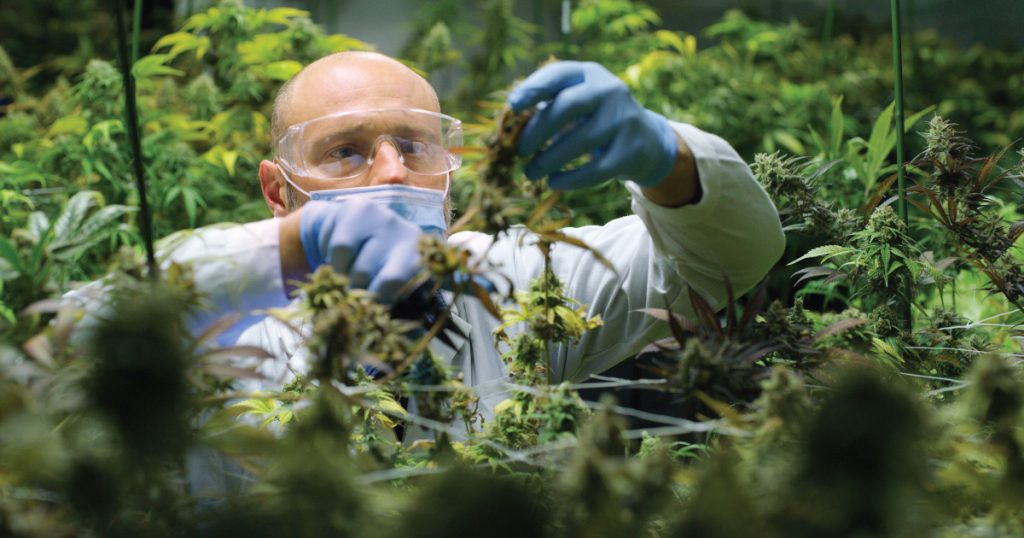The Cannabis Debate: Rising health risks, addiction, and regulation
July 7, 2025
LYNNWOOD—As Lynnwood City Councilmembers consider approving retail cannabis in September, a growing body of research is shedding light on its potential health risks, particularly for young people, frequent users, and persons exposed to secondhand cannabis smoke.

Recent studies point to increased risks of addiction, cardiovascular disease, cognitive impairment, and mental health issues linked to cannabis and its primary psychoactive component, THC, while some argue that cannabis offers health benefits and safer consumption methods. However, as THC potency rises and vaping trends among teens escalate, the mounting evidence of harm is prompting calls for stricter regulation and public education.
The debate over cannabis remains complex with the scientific community calling for caution, emphasizing that the full scope of its long-term effects is still unfolding.
Cannabis use disorder (CUD), a condition characterized by dependence on cannabis, is becoming a significant public health concern. In an article written by Mark S. Gold, M.D., in Psychology Today, referencing a longitudinal study published in the Journal of the American Medical Association (JAMA) titled, “Association of State Cannabis Legalization with Cannabis Use Disorder and Cannabis Poisoning,” analyzed the impact of state-level medical and recreational cannabis laws on cannabis use disorder of over 110 million employer-sponsored health insurance enrollees and found that states with legalized medical cannabis saw a 42.7% increase in CUD and nearly double the rate of cannabis poisonings compared to states without such laws.
Gold also references a February 6, 2025, JAMA Network Open study of 11.6 million people studied for a median of 5 years, which revealed that individuals hospitalized for CUD had nearly three times the risk of death within five years compared to the general population.
“The facts are clear: cannabis is addictive, its use is on the rise, and those affected by cannabis use disorder face a heightened risk of premature death,” wrote Laura Bierut, M.D., in a JAMA editorial. “It is time to confront this public health crisis head-on.”
Additionally, a February 4, 2025 Canadian study comprising 13,588,681 individuals, showed a 270% increase in hospital care for CUD after non-medical cannabis legalization, with a rise in schizophrenia cases, from 7% to 16%, prior CUD diagnoses.
Frequent cannabis use is also being linked to serious cardiovascular issues. In a June 2025 article titled, “Cannabis Use May Double Risk of Death From Cardiovascular Disease, Study Finds,” by David Mills in Healthline, a meta-analysis published in Heart found that cannabis use doubled the risk of death from cardiovascular disease, with a 29% higher risk of acute coronary syndrome and a 20% higher risk of stroke.
“Frequent cannabis use has increased in several countries, and many users believe that it is a safe and natural way to relieve pain or stress. In contrast, a growing body of evidence links cannabis use to significant harms throughout life, including cardiovascular health of adults,” wrote Stanton Glantz, PhD, an emeritus professor at the University of California San Francisco, and Lynn Silver, MD, a professor in UCSF’s Department of Epidemiology and a program director at the Public Health Institute in Oakland, CA.
The research looked at 24 studies published between January 2016 and January 2023 that included about 200 million people. The study participants were mostly between the ages of 19 and 59.
“If we ignore these signals, we are destined to repeat the fatal history of cigarette smoking,” said Robert Page II, PharmD, a professor in the Department of Clinical Pharmacy and the Department of Physical Medicine/Rehabilitation at the University of Colorado Skaggs School of Pharmacy and Pharmaceutical Sciences.
The study noted that cannabis potency has increased significantly, with THC levels rising from an average of 4% in 1995 to over 16% in 2022, amplifying these risks.
Additionally, a study from earlier this year found that cannabis users were six times more likely to experience a heart attack compared to non-users. Another 2024 study indicated that individuals using cannabis for chronic pain management faced an increased risk of atrial fibrillation and other heart arrhythmias.
The impact of cannabis on brain function, particularly in young adults, is another area of concern for scientists.
In a University of Colorado Anschutz Medical Campus article published in February 2025 by Julia Milzer titled, “Largest Study Ever Done on Cannabis and Brain Function Finds Impact on Working Memory,” detailed a study published in the Journal of the American Medical Association Network Open that examined over 1,000 adults aged 22 to 36 using brain imaging technology. It found that 63% of heavy lifetime cannabis users and 68% of recent users showed reduced brain activity during working memory tasks, leading to poorer performance.
Working memory is the brain’s mechanism for briefly storing and processing information needed for a task. It enables people to handle information, address problems, and make choices.
“As cannabis use continues to grow globally, studying its effects on human health has become increasingly important. By doing so, we can provide a well-rounded understanding of both the benefits and risks of cannabis use, empowering people to make informed decisions and fully comprehend the potential consequences,” said the study’s first author Joshua Gowin, PhD, assistant professor of radiology at the University of Colorado School of Medicine on the University of Colorado Anschutz Medical Campus.
The study suggests that heavy cannabis use may have long-lasting effects on cognitive functions like decision-making and attention, though causation requires further research.
Furthermore, a May 3, 2023, Columbia University JAMA study concluded that teens using cannabis recreationally were two to four times more likely to develop psychiatric disorders, depression, and suicidality when compared to their than non-using peers.
The rise in teen vaping of cannabis-related substances adds another layer of risk.
A July 2025 study by Jack Chung, published in the American Journal of Preventive Medicine and reported by SciTechDaily, found that between 2021 and 2023 in the United States, adolescent vaping of THC, CBD, and synthetic cannabinoids increased significantly.
Chung reported a surge in THC use in 2022, with synthetic cannabinoids—lab-created compounds mimicking cannabis—continuing to rise thereafter.
“We found a significant increase in adolescent vaping of THC, CBD, and SCs from 2021 to 2023,” said Chung. “THC vaping peaked in 2022 while the use of SCs continued to increase. Adolescents increasingly expressed uncertainty about the substances they were vaping; for example, uncertain respondents answering ’don’t know’ if they have vaped SCs tripled across the years. Our results also showed that females had a higher prevalence of THC, CBD, and SCs vaping compared to males.”
In 2023, an estimated 7.4% of U.S. adolescents (2.55 million) vaped THC, 2.9% (or 999,000) were vaping a cannabidiol (CBD), and 1.8% (620,000) vaped synthetic cannabinoids, which are often unregulated and dangerously potent.
“The growing popularity of SCs among youth raises serious concerns about potential health risks and highlights the urgent need for targeted public health interventions and regulatory oversight,” said Chung. “These synthetic cannabinoids products could potentially be deadly, with many adolescents unknowingly vaping these harmful and synthetic substances.”
Despite concerns from members of the scientific community, some argue that cannabis is not as harmful as portrayed and may offer health benefits.
Paul Armentano, deputy director of NORML, a cannabis advocacy group, told Healthline that while tobacco smoke’s role in cardiovascular disease is well-established, the evidence for cannabis smoke is less conclusive. He cited studies from 2020 and 2023 suggesting no or reduced cardiovascular risk from cannabis use.
Armentano also pointed to vaporization as a safer alternative, referencing 2006 and 2007 studies that found no health effects from this method.
Additionally, a 2023 study of 3,100 patients who were treated with various forms of medical cannabis, including THC and CBD, found that medical cannabis improved quality of life for some chronic pain patients, and other research suggested its benefits in managing depression, social anxiety, PTSD, and reducing cancer treatment side effects.
Stanton Glantz, PhD, and Lynn Silver, MD, argue that cannabis should be regulated like tobacco, not criminalized but discouraged, with protections against secondhand cannabis smoke exposure.
According to the Center for Disease Control, secondhand cannabis smoke contains many of the same toxic and cancer-causing chemicals found in tobacco smoke and some in higher amounts. It also contains tetrahydrocannabinol (THC), the compound responsible for most of cannabis’s psychoactive effects (or the “high”).
THC can be passed to infants and children through secondhand smoke, and people exposed to secondhand cannabis smoke can experience psychoactive effects.
“There is an important role for public health and public policy in addressing the risks identified,” wrote Glantz and Silver.
Similarly, Chung emphasized the need for “targeted public health interventions and regulatory oversight” to address teen vaping of unregulated substances. Cheng-Han Chen, MD, recommended that patients with cardiovascular risk factors avoid cannabis altogether.

Search
RECENT PRESS RELEASES
Related Post



